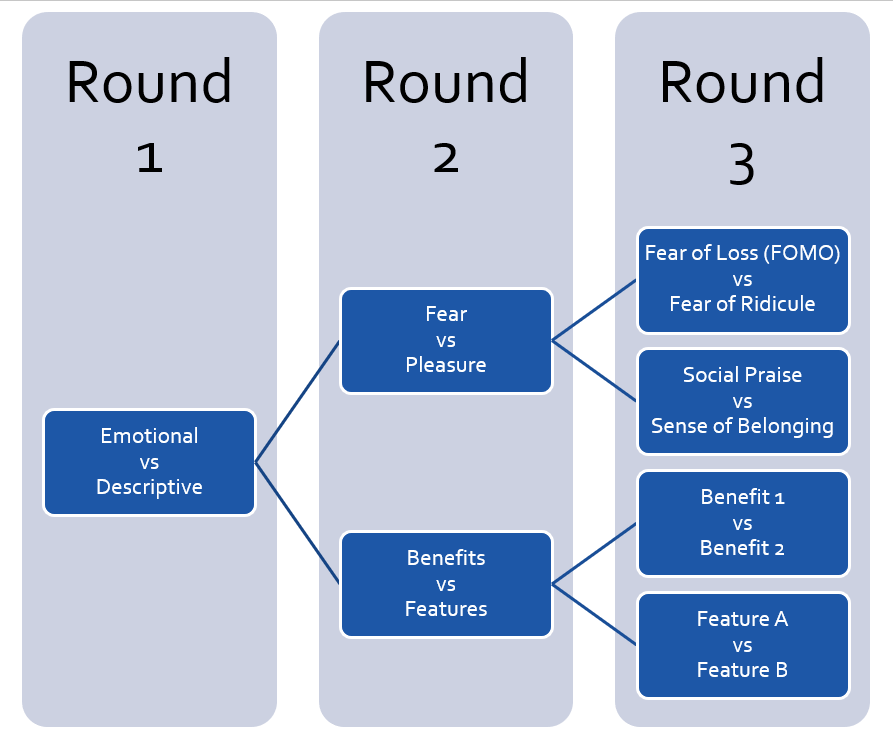Ad copy is often the first interaction a consumer has with a business. For AdWords and Bing Ads, advertisers have 30 characters in Headline 1, 30 characters in Headline 2, and 80 characters of description text. That’s a lot of pressure to convince the reader to click the ad.
If you’re a seasoned pay-per-click advertiser, you may feel like you’ve tried everything to keep your ad copy fresh. You may have campaigns or ad groups where the champion ad has been running a very long time.
You may be tempted to use automation. But ad copy requires human intuition. In my experience, ad copy is one of the last places to bring in machines.
No matter how long you’ve been running PPC ads or what industry you’re in, creating fresh ad copy is likely a challenge. An effective testing strategy — one that teaches you about your customers — is even more challenging.
In this post, I’ll offer a step-by-step testing strategy for PPC ads. It will, hopefully, offer new ideas for many months and help you better understand your customers and prospects.
Testing in 3 Rounds
The diagram below illustrates a 3-round testing plan for PPC ad copy. This plan is simple yet powerful. You can customize it for your company and make it even more useful.

This 3-round testing plan is simple yet powerful. You can customize it for your company.
Round 1 tests whether your prospects respond to emotional or descriptive ads or both. Round 2 then refines those results, to determine “fear vs. pleasure” and “benefits vs. features.” Round 3 fine-tunes the results of round 2, testing (a) fear of loss vs. fear of ridicule,” (b) social praise vs. sense of belonging, (c) benefit 1 vs. benefit 2, and (d) feature A vs. feature B.
The Basics
Round 1 is a good place to start because it presumes very little about your prospects. The descriptive ad copy simply describes the product or offering. Likely it will mirror the keywords and may even utilize dynamic keyword insertion so that your ad matches actual search terms.
Testing an emotion will provide insights as to whether your prospects respond better to emotional appeals or descriptions. For example, ads for very technical products that attract logical, analytical folks may have more success with descriptive text. But ads for fashion-related products, as an example, should likely include emotional appeals.
Get Emotional
I’ve addressed the details of using emotions in your PPC ad copy. A good first test is fear vs. pleasure. Both are strong and opposite emotions. Ad copy for this test could be “Available For A Limited Time” (fear of missing out) and “Downloaded Over 100K Times” (sense of belonging).
Emotions are limitless. Emotion-based ad copy is an opportunity to get very detailed with your testing. You could test words that imply greed, altruism, acceptance, love, and pain. Perhaps multiple emotions produce better results for your products.
Then take it to the next level and get more specific. In round 3, you’ll understand exactly what is motivating your target customers.
Benefits vs. Features
My marketing professors in college emphasized the importance of the benefit — “What’s in it for me?” This principle is not invalid. But when you’re limited to 140 ad characters, you may not be able to convey both a feature and its benefit.
In some instances, the benefit of a feature is obvious. It requires no explanation. Consider light bulbs. By saying your light bulbs are 100 watts (a feature) compared to competitors’ light bulbs at 60 watts, you can expect consumers to understand that your light blub is brighter (a benefit) than the competitors’.
Add numerous tests in round 3 if products or services have many features and many benefits. Stay in round 2 — testing benefits vs. features generally — or move to more specific tests in round 3. If you find a feature with a strong response, go back and test against other benefits.
Additional Tips
Sprinkle these additional ideas into your testing strategy.
- Flip headlines. Some tests can be as simple as flipping Headline 1 and Headline 2 to give phrases or concepts more weight or attention.
- Calls to action. Test a call to action in different parts of your ad.
- Ad extensions. With AdWords and Bing Ads showing so many ad extensions, your ads might appear redundant if the headline, sitelinks, and callouts all say virtually the same thing. Conversely, redundancy could produce strong results because you’ve emphasized the copy so heavily. That’s why we test.